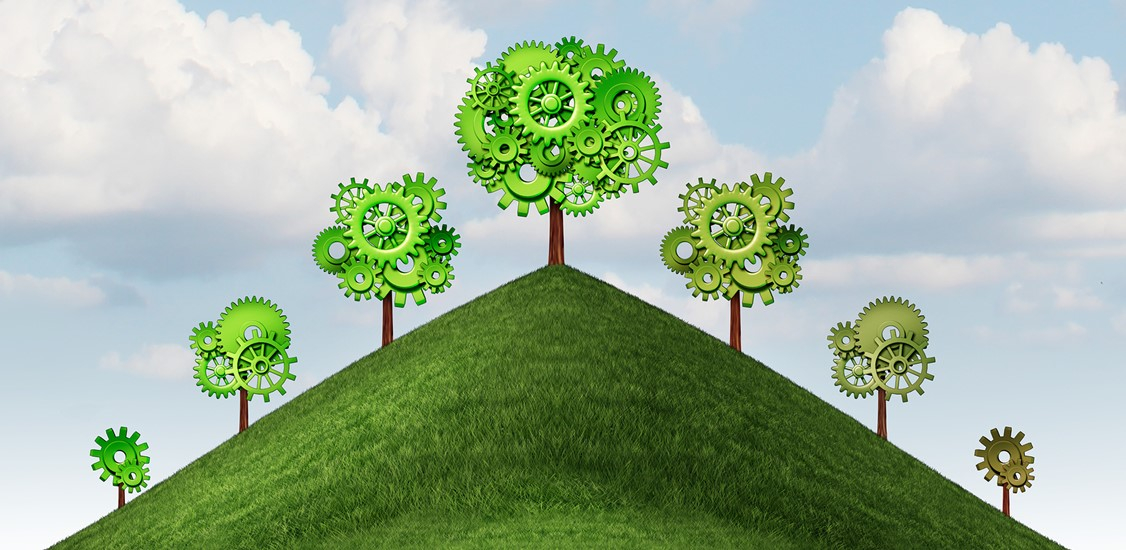One of the biggest challenges facing the world today is finding a way to live and work sustainably to prevent climate change. Businesses and the public are continually becoming more aware of the detrimental effects that environmental destruction is having on the planet. For example, approximately seven million deaths worldwide per year are caused by air pollution, and currently, 3.6 billion of the global population live in potentially water-stressed areas.
This crisis is the result of human actions, such as industrialisation and the overuse of motor vehicles. These produce a tremendous amount of greenhouse gases such as carbon dioxide, which trap heat in the atmosphere and therefore cause the Earth to get significantly hotter. Furthermore, pollution is a result of the waste created by industrialisation and human lifestyle. The overconsumption of plastic, in particular, is having addon effects, as only a small amount of it is recycled, and the industry requires a lot of oil in order to produce it.
Certainly, there have been many initiatives in recent years to reduce businesses’ carbon footprint; many companies have reduced their packaging of products and removed single-use goods. However, there is still more work to be done. Consumers want to change, and the Earth needs it; therefore, companies across all industries must become more sustainable.
The environment and businesses
Sustainable practices are crucial for any business to survive and succeed in the future. The general public, institutions, and the media now expect responsible actions to combat climate change, making it essential that companies not only introduce these practices but also publicise them to their customers. In the battle against climate change, there are many key areas that businesses can focus on to improve their carbon footprint.
Currently, companies generate 70% of all greenhouse gas emissions. Greenhouse gasses trap heat in the Earth’s atmosphere, causing an increase in global temperatures; typical examples include carbon dioxide, methane, nitrous oxide, and fluorinated gasses. The harmful consequences from these gasses are so significant that in March 2020, the European Commission approved the Climate Law, which lays out the EU’s legally binding plan to reduce emissions. GHG emissions will need to halve every decade to approach net-zero by 2050, with an intermediate target for 2030 set to 50-55% compared with the levels from 1990. Businesses will have to begin phasing out fossil fuels and increase their use of renewable energy in the move towards net-zero.
The EU is currently striving to be the first climate-neutral continent, and as part of this, the European Green Deal is aiming to restrict the use of single-use plastic items and ban non-reusable and non-recyclable packaging by 2030. Fossil-intensive materials, such as plastic, will need to be replaced with sustainably sourced renewable and bio-based materials. Companies will need to review emissions in their supply chain and potentially provide them with incentives to become more sustainable. Ideally, suppliers need to reduce the number of plastics that they use for packaging or casing, as this will be the consumers’ first contact with the product, so it should mirror the company’s affirmative environmental policies.
Becoming a sustainable operator
The telecoms industry is not excluded from having to embrace sustainable practices and develop their current strategies. The industry needs to take significant steps to dynamically affect their energy efficiency, carbon intensity, and the amount of pollution they generate. Many global operators have already begun rolling out initiatives to decrease their carbon footprint, for example, in the UK, O2 promised to become carbon neutral by 2025 and said it would work alongside its supply chain partners to reduce emissions by 30% during this period. Similarly, Deutsche Telekom, an operator in Germany, stated it would no longer cause CO2 emissions by 2050.
For operators wanting to become more sustainable, it is essential that they set targets and put a strategy in place. Finnish service provider Elisa is an excellent example of how a proactive approach can help a business become more sustainable. Elisa purchased zero-emission energy and utilised more energy-efficient operating methods to reduce its carbon footprint significantly. As a company, it promoted a smarter use of resources and introduced a system where employees could work from home to reduce the amount of emissions released into the atmosphere from commuting.
The choice of broadband-access technology can also have a radical impact on an operator’s carbon footprint. Fibre cables are much more sustainable than copper ones. This is because copper-based access networks have significantly higher power consumption per connection than fibre-based. Equally, Fibre-copper setups such as Fibre-to-the-Cabinet (FTTC) have a negative impact on the environment as street cabinets are always being powered.
Small measure, significant changes
Operators can adapt their technology to become more sustainable. For example, when selecting a fibre-access technology, operators can opt for PON, which allows many end-users to connect from a single port, rather than point-to-point technology that permits only one user per port. Operators can also take into account their carbon footprint at customer premises, such as by opting to use lower-consumption devices and/or select devices with smart energy management, which can switch off individual internal modules when they are not used.
Changing the way a business runs without comprising efficiency can often seem like an arduous task. To get started, operators can help prepare for the necessary changes, for example, by getting acquainted with global goals and national regulatory frameworks and assessing the impact that the company’s current strategy has on the environment, and should set clear goals, milestones, and checkpoints to make it easier to track progress. It also has to be emphasized that operators shouldn't delay putting a complete sustainability strategy in place, as it is the small steps that can make a big difference. Of course, it is important to always communicate these changes clearly with stakeholders, the public, and customers.
Creating a sustainable future
There is increasing pressure on all industries to become more sustainable; businesses must be vocal and visible in how their actions impact the world and how they are evolving to become more environmentally conscious. As for operators, it is down to them to assess their impact and evaluate the decisions they need to make concerning the environment. By setting clear goals for the future and creating strategies to implement positive changes, operators, consumers, and the planet will all reap the immense benefits on offer.






















